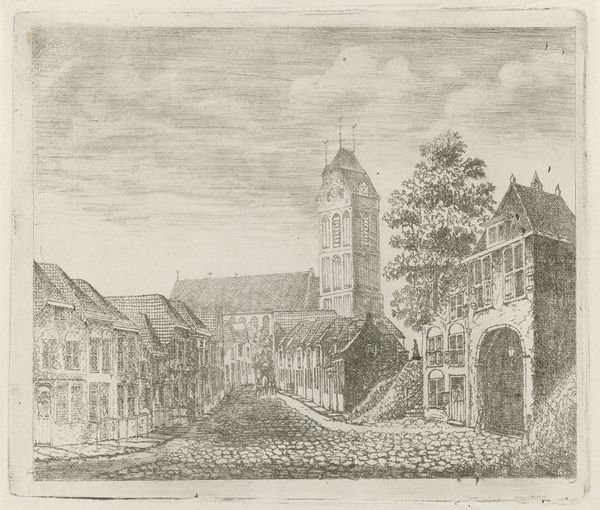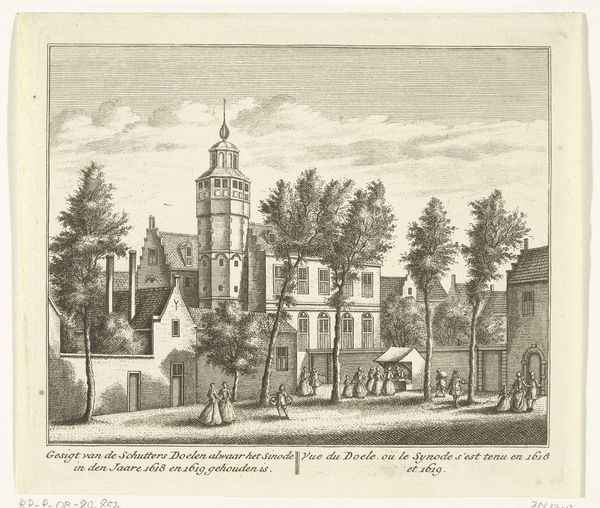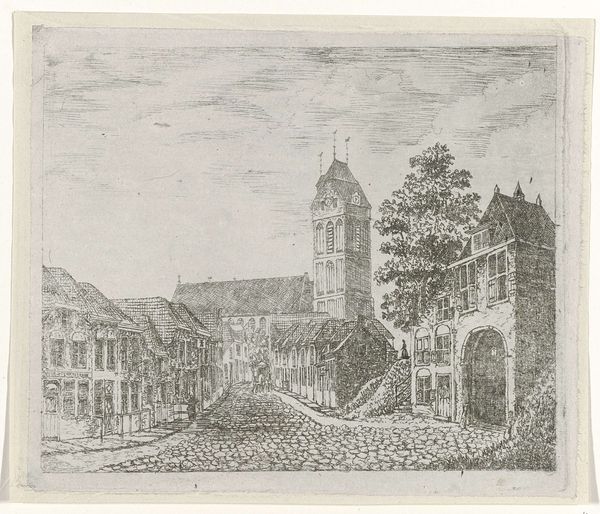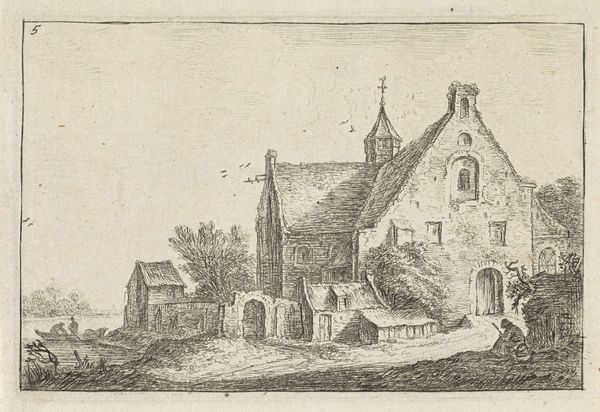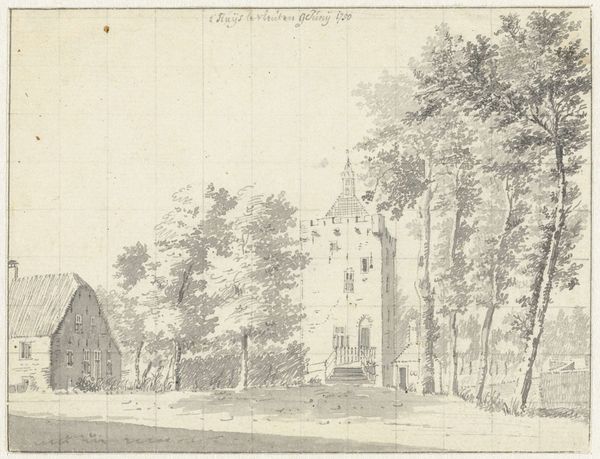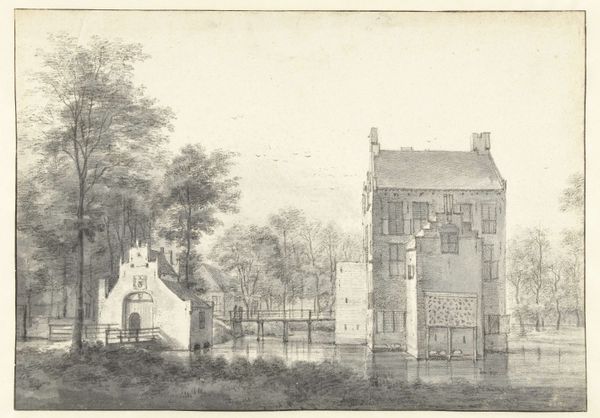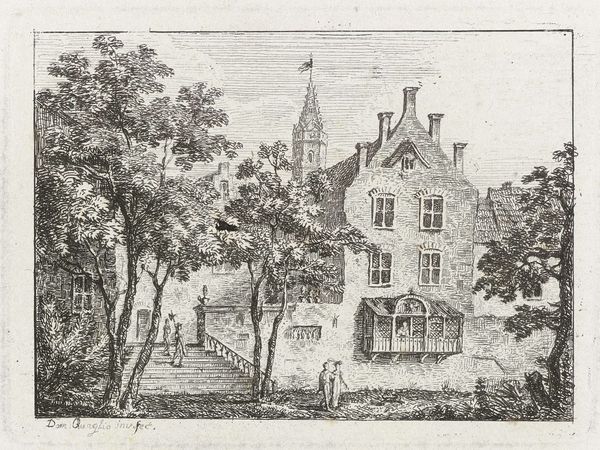
drawing, ink, pen, architecture
#
drawing
#
pen sketch
#
landscape
#
ink
#
pen
#
architecture
#
rococo
Dimensions: height 107 mm, width 162 mm
Copyright: Rijks Museum: Open Domain
Curator: Before us, we have Jan de Beijer's "Cuylenburgs Hofstad te Maurik," a drawing believed to be created sometime between 1750 and 1757. The work, rendered in pen and ink, captures a detailed landscape scene. Editor: There’s a delicate quality to the linework, a certain quietude. The composition is balanced, with the building offset by the trees, creating a sort of visual harmony. Curator: De Beijer's technique really stands out here. Look at the architecture; the artist uses precise lines to define the building's structure, contrasting with the more loosely rendered trees, almost evoking Rococo sensibilities. Editor: It’s intriguing to think about the materials he employed—the ink itself, the type of pen nib. These choices would profoundly influence the character of the marks. Was it iron gall ink? Quill or metal nib? And who prepared it, and how? These details speak to a broader workshop and production network. Curator: Indeed. The interplay between the controlled architectural rendering and the more organic depiction of the landscape points to a very conscious engagement with contrasting visual languages. The drawing offers a very interesting formal contrast. Editor: Consider the social implications as well. De Beijer would likely have traveled to the estate at Maurik, interacted with the landowner and staff, relying on their patronage or payment for their effort. This wasn’t a purely artistic venture; there was an element of skilled labor and commerce underpinning its creation. Curator: I see your point, and perhaps that transactional exchange facilitated de Beijer's artistry and ability to explore such visual forms. What remains undeniable is the captivating contrast between the geometrical certainty of architecture and the ephemeral quality of the natural world conveyed by these skillful lines and careful compositions. Editor: It serves as a potent reminder that artworks are invariably the products of material processes deeply enmeshed in a social fabric. From ink-making to patronage networks, understanding these practical dimensions brings us much closer to fully grasping Jan de Beijer's work. Curator: A wonderful insight, providing us with a better sense of both form and making. Editor: Agreed; and a fitting place to conclude our observations.
Comments
No comments
Be the first to comment and join the conversation on the ultimate creative platform.
